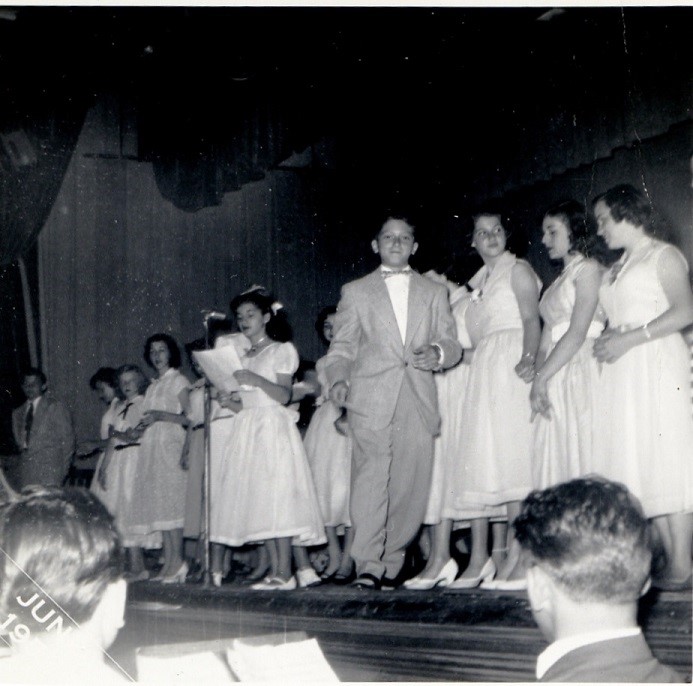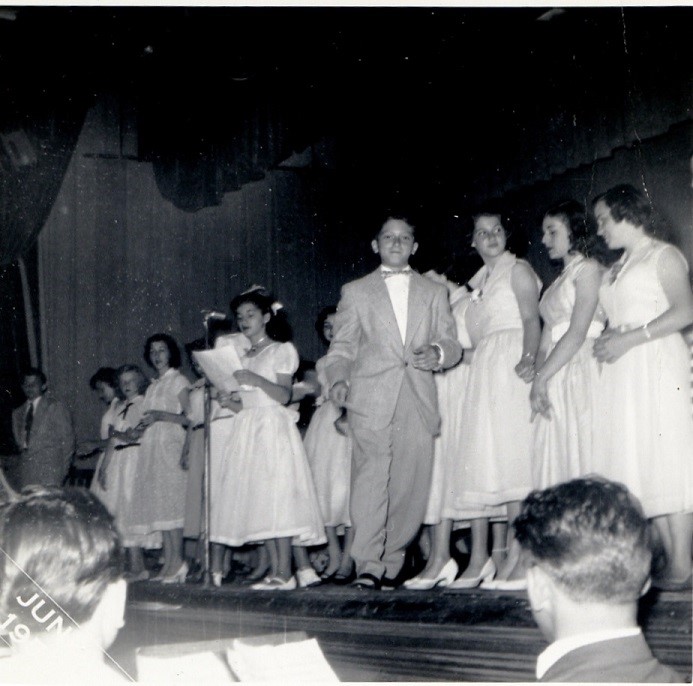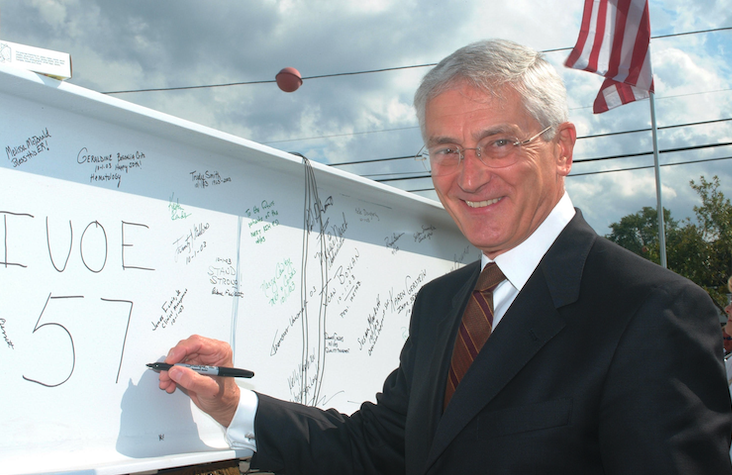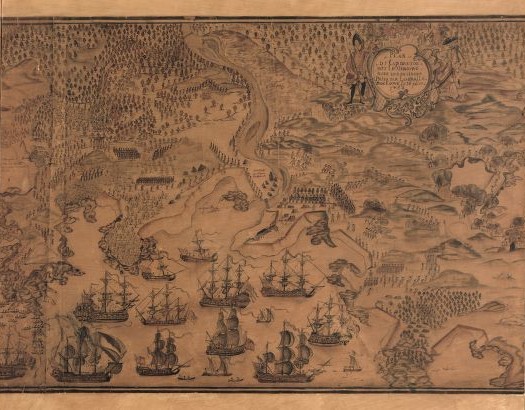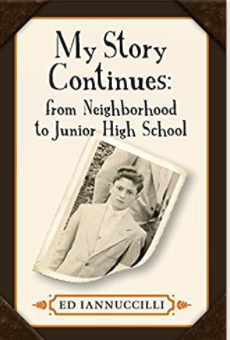Ed’s first two stories below are about his many trips to a movie theater on Chalkstone Avenue, and his trips to downtown Providence to see vaudeville shows at The Fay’s (from Ed’s book, Growing Up Italian: Grandfather’s Fig Tree and Other Stories). These two stories relate to an article by Russell DeSimone (which mentions both theaters) entitled, The Theaters of Providence: Part 2 – The Modern Era.
Ed’s third story below is about his joy of riding the trolley from Academy Avenue to downtown Providence and back. Ed published this recollection in his second book, My Story Continues: from Neighborhood to Junior High School. This story relates to an article by Scott Molloy entitled, Providence’s First Trolley Car in 1892. This article was part of a series of articles by Molloy on mass transportation in Rhode Island.
Of course, Ed’s recollections provide the wonder of the child’s perspective.]
Friday Night Movies
‘We were the lucky ones, we first citizens of film.” – Roger Angell
Friday was our night at the movies, and the Castle Theatre on Chalkstone Avenue was where it happened. Its marquee jutted out in the shape of a “V.” Its white background laced with black metal strings held the movie titles…titles that were changed twice a week; new movies Sunday through Wednesday and Thursday through Saturday.
Alongside the doors, and encased in glass, were the movie posters.
The lobby was small. The ticket counter was on the right, the candy counter on the left. Red velvet curtains draped both sides of the screen. “This would be a great place for vaudeville shows,” I thought.
“All right, move along, get in, get in!”
Mrs. G (Mammagool) was the severe lady who managed the Castle Theater and patrolled the aisles with an iron fist that pounded the seats, and a flashlight that pierced the darkness. Buxom, stern, glasses pinched on her nose, square-heeled, white-shoed and white hair tied in a bun, she ruled with fear, the fear of eviction.
“What do you mean you got thrown out?”
Because the movies mattered so much, we marched to Mamma’s orders. We had to be there. We never missed the Friday night features and in our minds—just for a while, we became the heroes we saw in those movies.
“Take your hat off!” Mamma again.
“Knowing is becoming,” Aristotle said. We knew the stars: Scott, Weissmuller, Murphy, Rogers, Crabbe, Johnnie Mack Brown, Autry, Cassidy, Widmark, Geronimo, Crosby, Spanky, Dagwood Bumstead (well, maybe not), and Ladd…and we became them. They brought our senses alive.
It was fun to identify the second-rate actors. “Who’s that guy in the back?” Pete would ask. He knew. Was Andy Clyde second-rate?
Oh, for a cartoon! Elmer, Bugs, Donald. Something more! Please? “Wipe your feet!” Mamma was there.
Randolph Scott, Hoot Gibson, Judy, Tin Man, Scarecrow, Snow White, Dopey, 3-D glasses, “Creature from the Black Lagoon.” “Quiet! Be quiet! Hurry! Move on in!”
Dorothy, Crosby and Hope. Hedy, Lana, Rita and Coop.
“No one in the balcony!” The balcony, where couples smooched, was a great place to watch the movie, but off limits by Mamma’s rules.
Candy was necessary and an integral part of the movie experience; Jujubes, Juicyfruits, Jawbreakers, Junior Mints, Root Beer Barrels, Charleston Chews, Mason Dots, Milky Ways, Snickers, Sen Sens, Squirrel Nuts, Necco Wafers, Milk Duds and, of course, popcorn.
Ladies collected dinner sets and encyclopedia books on Monday nights. Saturday…two movies for 25 cents…an all-day happening. Pattie News, war films, “Ike” and Audie.
“No gum!” Mammagool again.
Black Beauty, Strawberry Roan, Trigger.
“Don’t rest your head on the seat, you’ll get ringworm! They’ll shave your head.”
After the movie, we went next door to The Creamery for a banana split with nuts, cherries and real whipped cream.
Share memories with friends who were there when Floppy won…. when Worlds collided…when Abbott ran in fear…when Geronimo was captured…when Randolph fell off his horse…when Gorcey slapped Hall…when Stratton pitched on a wooden leg…when Dizzy (was that Dan Daily?) pitched with Daffy, when Fred (was that MacMurray?) discovered Flubber, when “Coop” won at High Noon. They were pieced together in an adventure fantasy.
Mamma flashed her light. “Take your arm off that girl!”
How exciting it was to put your arm around a girl. Now what? What next?
The weekly serial… The Lost Jungle…giant warriors.
“Get your feet off the seat!”
I walked to and from that neighborhood theatre, from Wealth Avenue to Chalkstone Avenue, every Friday night. It was safe.
One evening, Mamma confiscated my jackknife. “Pick it up on the way out!” When I asked for it, she didn’t even look up. “What jackknife?!”
Never mind. What would I do if I were banished forever?
The Castle Theatre on a Friday night was the ritual. Movies, adventure, heroes, stories, two for twenty-five, ice cream, candy, Randolph, Clark, Scarlet and Mamma. How lucky we were, children of film, fun, friendship and fantasy.
How do we understand our love for the Friday night movies? Easy. Movies were fantasy mixed with reality, friendships and the pleasure of extra freedom on Friday nights.
Honey nougat can’t be beat; fudge parfait, what a treat. You’ll love Necco Sky Bar.
“Go right home!”
Saturday Afternoon at The Fay’s
A small theatre on a small street was the reason I loved Saturdays. It was a day of no school and a chance to take the bus to downtown Providence and Fay’s Theater, or “They Fay’s” as we knew it.
Originally opened as the Union Theater in the 1920s, at the intersection of Union and Worcester Streets, it was eventually demolished in May 1951. The Biltmore Hotel’s parking garage is now on the site.
The standing invitation for The Fay’s was, “See it all for 10 cents.” And the theater’s Saturday special was a stage show followed by a cartoon and a movie. The stars of the stage were well known cowboys and their horses. On occasion, there were kiddie talent shows, where once one of my friends sang, She’s the Kind of a Girl That Men Forget, and another sang Harrigan.
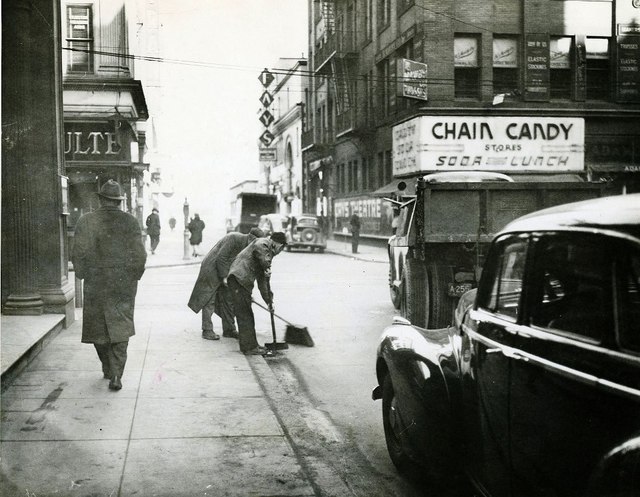
The sign for Fay’s Theater on Union Street is in the distance. The author likely visited this candy and soda store on the corner too.
The day started at the bus stop on Academy Avenue, near my home on Wealth Avenue. The trip to downtown Providence was safe, and our parents allowed us to go with friends, unchaperoned. The bus was crowded with adults and children also on their way to the city, either for a show (perhaps the organist and movie at The Loews State), or a movie theater (The Majestic, The Albee, The Carlton, The Metropolitan or The Strand), to shop, or to go to The Boston Store for a piece of the delicious and unforgettable custard pie.
After getting off the bus at Exchange Place, we had just a short walk to The Fay’s. Across from Union Street was The Providence Journal building, our landmark. The theatre was next to the Army/Navy Store and a restaurant called the Chicken Coop. We stood in line with anticipation and, after purchasing our tickets, we went to the counter where we bought candy (long lasting Jujubes, Mason Dots or Holloway Milk Duds were my favorites). Finally we made our way to the seats.
All seating was excellent. The show opened with a few unexciting vaudeville acts of trained seals, acrobats, muscle men and dogs. The star and his horse followed. Then the noisy crowd quieted and there, directly in front of us, appeared such heroes as Ken Maynard and his horse, Tarzan, or Bill Boyd (Hopalong Cassidy) and his horse, Topper, or Hoot Gibson (who was his horse?). They did tricks, sang, lassoed kids, reared up the horse, and talked to us. I so wanted to be a cowboy!
My favorites were Gene Autry and his horse, Champion, and Roy Rogers and Trigger. Though it was difficult to decide whom I liked better, I favored Roy because once, when he appeared at the Rhode Island Auditorium, I had a chance to go into the stable to see Trigger. Trigger’s handler asked Trigger his age and the splendid horse methodically stomped out the number in the dirt!
“Correct,” said the handler, and I was speechless. The Palomino won my heart for Roy.
The feature movie that followed the acts was about cowboys. They were all familiar to us because of their television-shows. Friday evening was the night for Hopalong Cassidy, Bob Steele, Lucky, Gabby Hayes, and the good guys. The Range Rider and The Cisco Kid were weeknight regulars.
On the Saturday I saw Gene Autry, the accompanying movie was Strawberry Roan, also starring Gene and Champion.
When the movie ended, we were prepared to be cowboys, but before going home to change into chaps, ten-gallon hats, spurs and six shooters, we made one more stop, for a coffee “cabinet” (Rhode Islandese for milk shake) at the ice cream parlor. Then the return home on the Atwells-Academy bus in the late afternoon; an experience to treasure.
I sometimes think of vaudeville when I go to the movies. An entrance to the theater is like the weekly trip I took to another world, The Fay’s. In addition to bringing me to a home of fantasy, the theater also contributed to my imagination, my education and my long-lasting friendships.
And the cost for the day? Twenty-five cents!
The Trolleys
Mounds of metal tethered with poles to wires that supplied the energy, the electric trolleys were masses of metallic power that glided, rumbled and wobbled along their tracks while passing rows of merchants: the tailor, shoemaker, barber, grocer, undertaker, baker, saloon keeper, liquor store owner and fish man.
Academy Avenue was a busy neighborhood where people bustled along sidewalks and streetcars hummed along the street. Trolley tracks and overhead wires connected one end to the other.
Bulky and powerful, the trolleys pounded along the avenue, rolling their way; steel wheels on steel rails. The burning smell was from the tracks when the car came to a squealing stop. As I walked down my street toward the avenue, I heard the wheels screeching, like chalk on a blackboard. The trolley’s poles swayed in the opposite direction of the streetcar. Wires looked like giant spider webs when the car stretched around the corner of Atwells Avenue’s hill to the flat of Academy.
I loved to ride with Grandma on her trek to Federal Hill every Saturday. The trolley stopped one block from the end of my street. I stood on tiptoes, stretching, looking and waiting for the clanging of the bell. It was near. Its brakes thumped. I took a deep breath. The trolley was more than a ride to The Hill. The trolley was a trip out of the neighborhood.
Grandma held my hand as we boarded and passed the friendly motorman. On summer days, the trolley was crowded and hot. I sat on a wooden seat by the open window while Grandma stood, holding the leather strap, swaying to the rhythm of the ride. Elderly ladies barreled on.
On summer days, I strolled alongside the track, sometimes spotting a dead mouse, wondering what a cat or dog would look like. Or maybe half my foot. I purposely caught my shoe in the track. What if the trolley was coming? In an old movie, a femme fatal was rescued when tied to a railroad track. So what if it was a train speeding at one hundred mph and not the trolley at its maximum of fifteen. It would do just as much damage … a lost toe, foot, leg, or a life. Because I knew I could easily get my shoe out, I did it again, and again.
Sometimes Dad, in a moment of defiance and bravery when no trolley or autos were in sight would say, “Watch me drive on the tracks. Do you feel us gliding? Do you feel how smooth it is? How she slides?” He was so excited, but just as quickly as he got on the tracks, he got off with a wispy smile of mischief. I tried it with my bike, but the wheels got stuck. Of course, Dad would have disapproved if he knew what we did with the trolleys.
It was the older kids who pulled the big adventures. I might put caps in the tracks to hear the rat-a-tat-tat. That was about it. But those guys used salutes or the formidable cherry bomb which might, we thought, jolt the car off the track. We fanned out after they placed the cherry bomb, taking strategic places well out of sight. I buzzed by the bakery. That bread smelled so good but there was no time to stop. I needed to get behind the building. I started to watch and listen while being prepared for a getaway. This wasn’t blind man’s bluff or Red Rover. This was the real thing. The cherry bomb went off. A few people turned. The car rolled on its journey, unaware.
The bigger thrill was when those kids ran after the car and jumped up to pull the boom off the wire. Screech. The sound of the untethered trolley came to an abrupt powerless halt. Down two steps and around to the rear came the mumbling conductor to reattach the boom. “Damn kids!”
A road crew dug up the tracks one day and replaced them with a smooth, black street, a white line down its middle. Gone were the rumbles, clickety clacks and screeches. Gone was another neighborhood institution. Gone was that mischief.
I drove to Academy Avenue recently, visualizing the trolley following the old street’s sidewalks, stores and schools, all gone. Now, so many years later, I think about those scenes. The tracks and its trolley were just another anchor among many in our neighborhood.
Wait. Was that a screech I heard?

